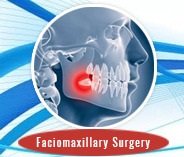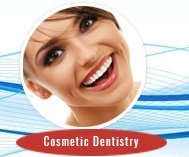When the skin is in the process of recovering from an injury, whether the result of an accident, surgery, a burn, or acne, scarring will occur wherever multiple layers of the skin have been affected. Once a scar forms, it is permanent but may be made less visible or relocated surgically.
With very few exceptions most people are self-conscious about facial scars. Some people may also experience diminished functioning of the eyes, mouth, or nose due to scarring. If you’ve wondered how facial scar revision could improve your appearance, your self-confidence, or your level of facial functioning, you need to know how scar revision works and what you can expect from this procedure.

What are Facial Burns?
Facial burns are injuries to facial tissue that can be caused by fire, the sun, chemicals, heated objects or fluids, electricity, or other means. Burns can be minor medical problems or life-threatening emergencies.
Face scar treatment depends on the severity and size of the burn. You can treat most minor burns at home using first-aid measures, such as cooling the skin and applying an anaesthetic cream or aloe vera gel to the burn. Deep or widespread burns need immediate medical attention.
Symptoms of Facial Burns
Signs and symptoms of burns include:
- Red, swollen skin
- Pain, which may be severe
- Wet or moist-looking skin
- Blisters
- Waxy white, leathery or tan skin
- Blackened or charred skin, in severe cases
Treatment for Scars
Burn treatment is done for burn scar removal. It depends on the severity and size of the burn.
Minor burns: You can treat first-degree burns and small second-degree burns at home using self-care measures, such as using burn scar removal creams and taking pain relievers. Minor burns usually resolve within a couple days up to several weeks.
Serious burns: Serious burns are considered a medical emergency and require emergency medical treatment.
Burn Scar Treatment
Burn treatment in a hospital usually involves the following:
Assessment of the facial burn and any related conditions, such as inhalation injuries. If not already done, clothing and jewellery are removed from the burned area.
- Intravenous (IV) fluids: Doctors deliver fluids continuously through a vein (intravenously) to prevent dehydration.
- Medications: Oral or IV pain medications and antibiotics are given to reduce pain and to prevent infection. Topical medications may also be applied to the burned area to reduce pain and speed healing.
- Wound care: The burn is cleaned and embedded pieces of clothing or other debris are removed.
- Protective dressings: Depending on the size and location of the burn, the area may be wrapped with dressings or bandages to protect the skin, reduce pain, and prevent the loss of heat and moisture through the wound.
- Skin grafting: For burns that cover a large area of skin, skin grafting may be required to help skin tissue regenerate, prevent scarring and aid the healing process.
- Facial scar removal surgery: In severe cases, surgery may be necessary to close the wound, remove the dead tissue or treat related complications.
Depending on the severity and size of the burn, you may be referred to a specialty facility or burn care unit for specialized burn treatment. Serious burns that cover a smaller area may heal without significant medical treatment, although they’re likely to cause permanent scarring. Generally, even serious burns heal much like any other wound //? a scar forms over the burned area, skin tissue regenerates and new healthy skin grows in the wounded area.
Second-degree burns can take at least two to three weeks to heal; more severe burns may take longer. Rehabilitation can take a year or more and may include reconstructive surgery (plastic surgery), ongoing wound management, and physical therapy to improve muscle strength and coordination.
Laser treatment for burn scars
Laser technology permits successful treatment of various types of burn scars. Properly classifying the type of scars present and determining which laser system provides optimum results. The 585-nm PDL is best used to treat hypertrophic scars, keloids, and striae. The pulsed carbon dioxide and Er:YAG laser systems effectively resurface atrophic scars. Future laser technologic advances and the addition of concomitant lasers and other treatments may further enhance clinical results.















